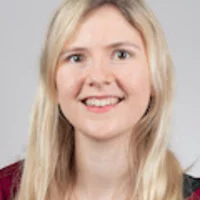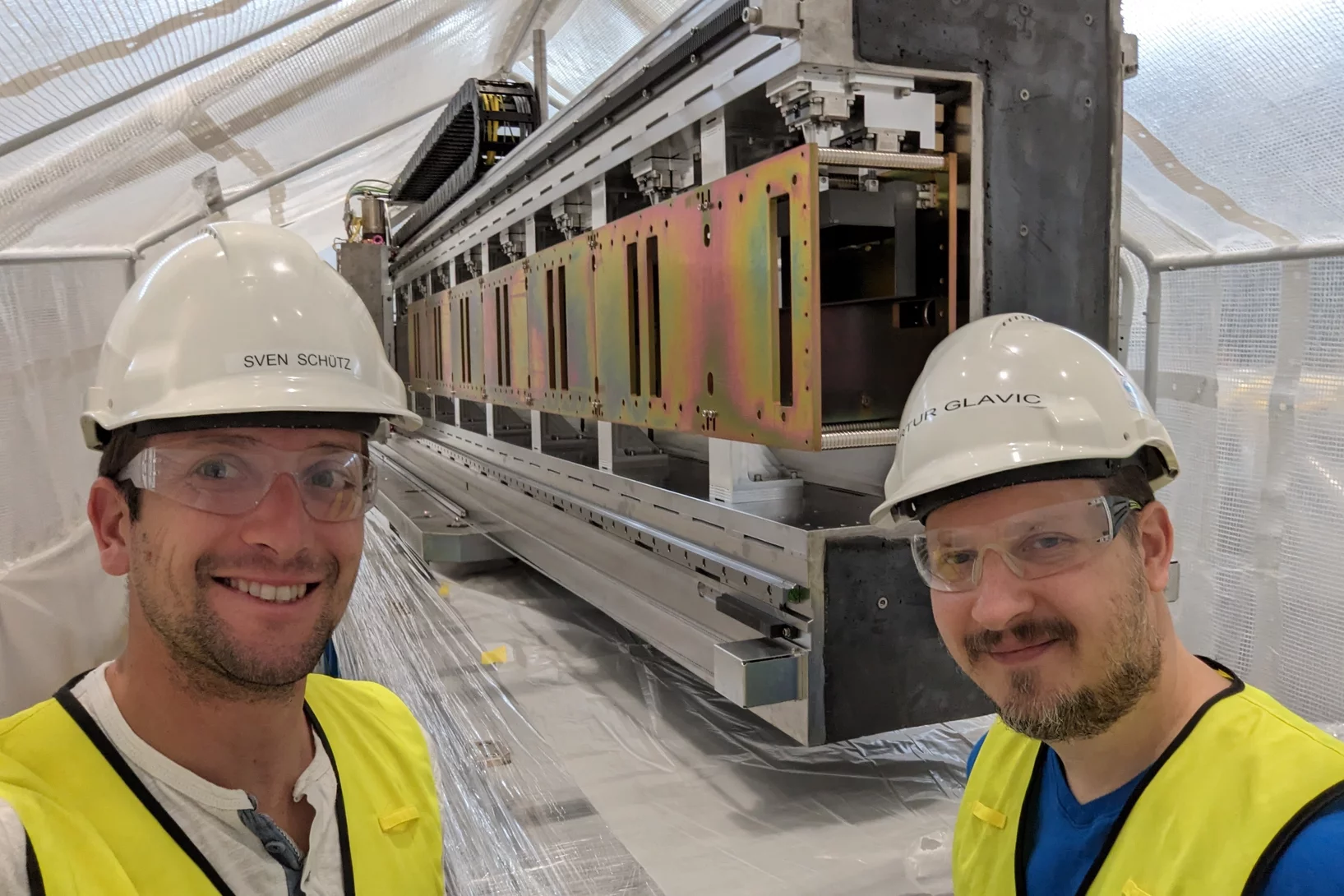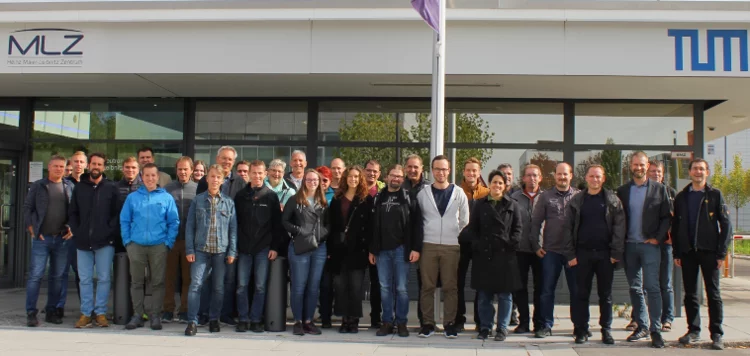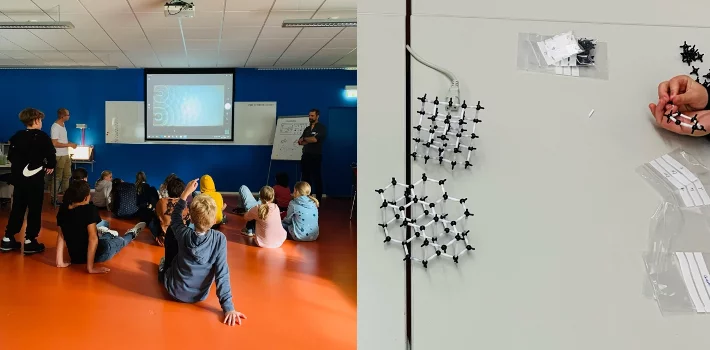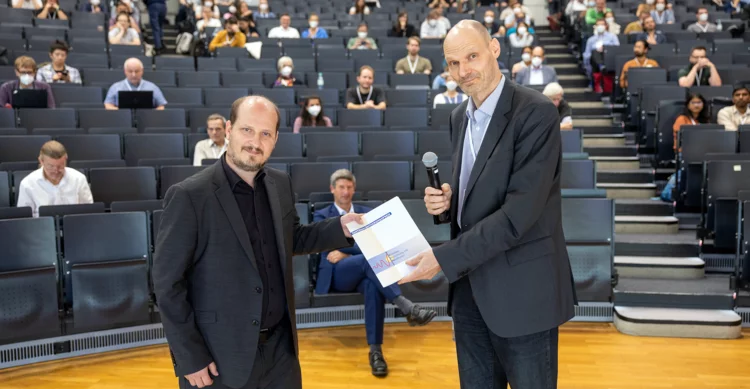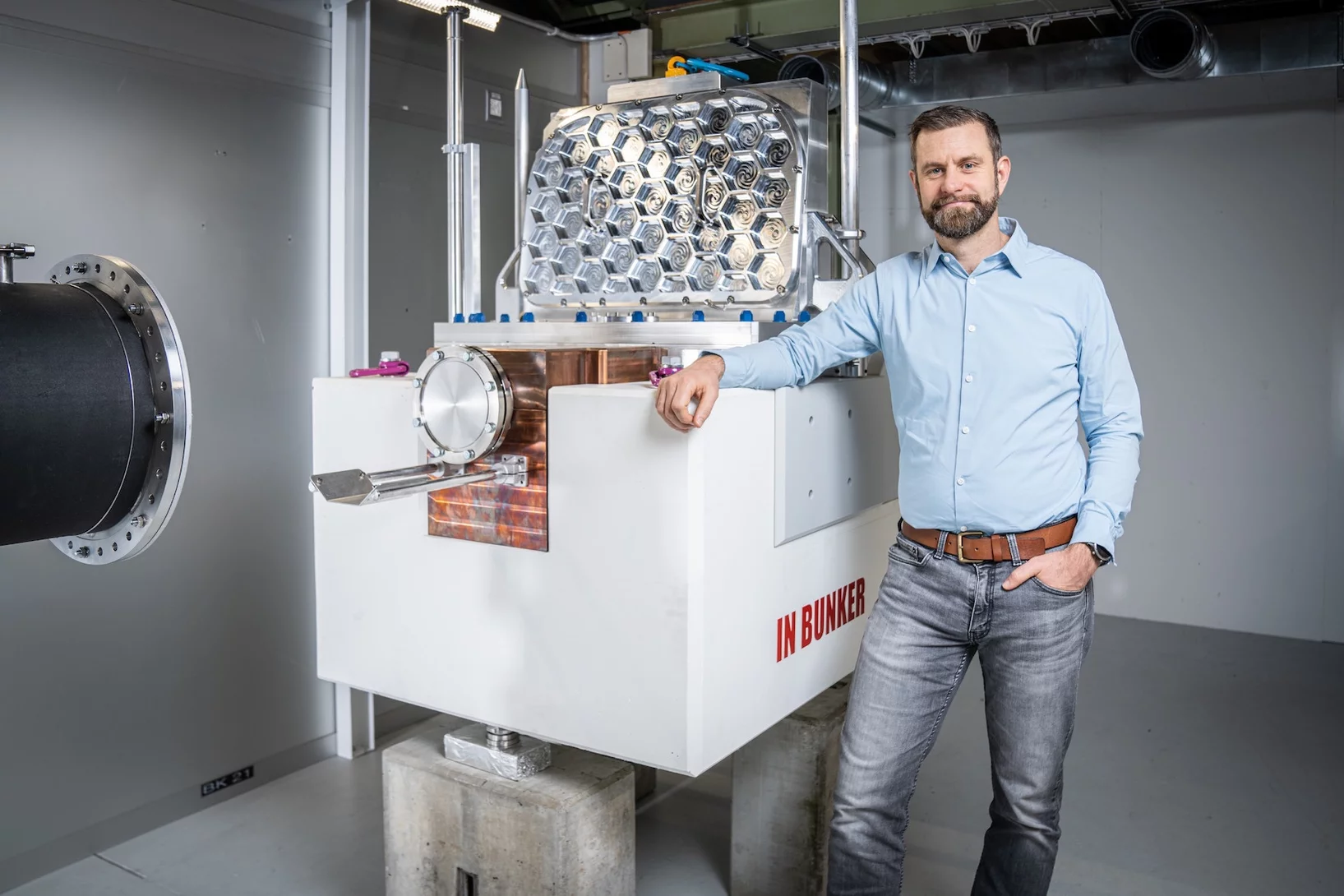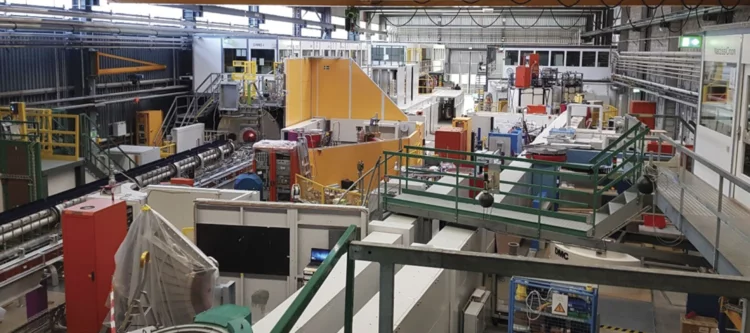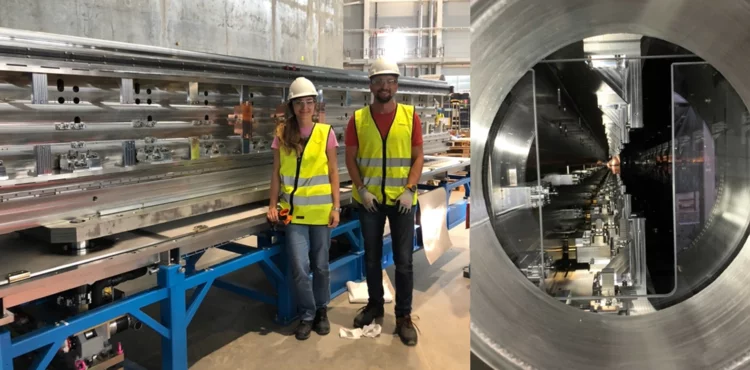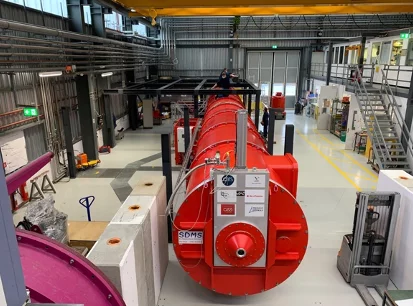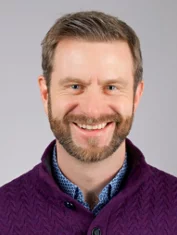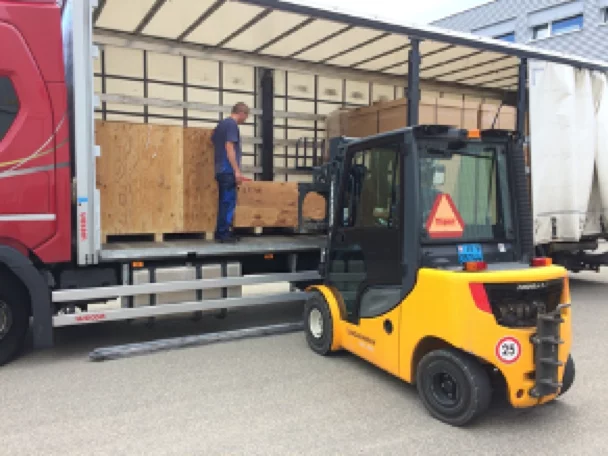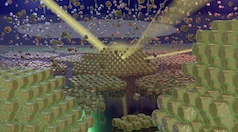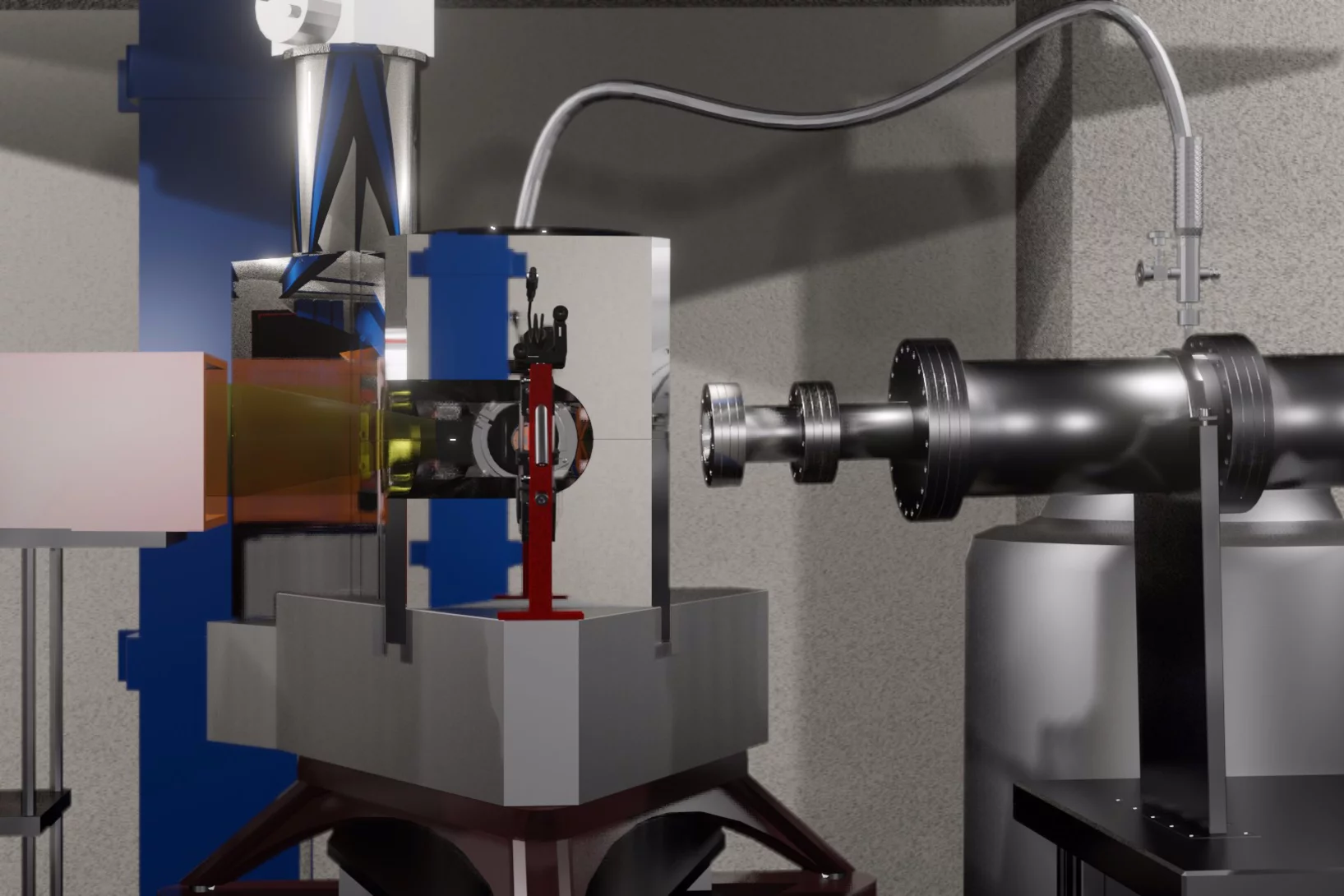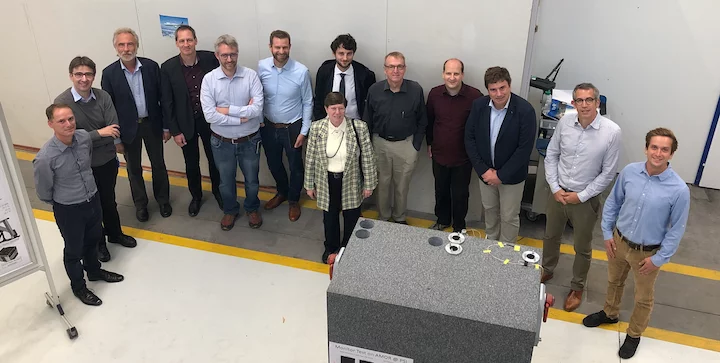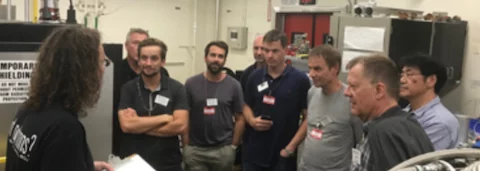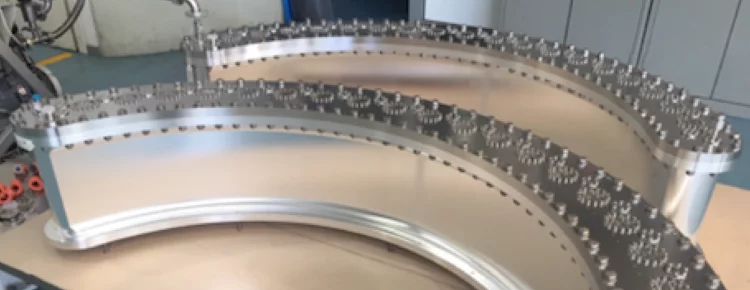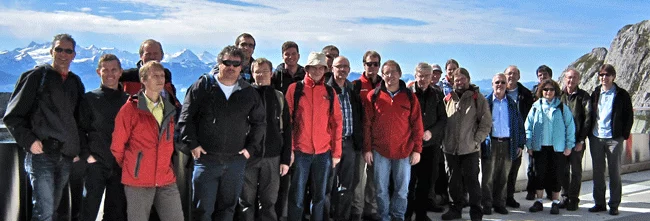Swiss precision optics in Sweden
PSI has finalized the precision Selene neutron optics for the ESTIA instrument. The complex state-of-the-art guide was installed at the European Spallation Source as a Swiss in-kind delivery.
The Laboratory for Neutron and Muon Instruments visits FRM II neutron research facility
Recently, the staff of the PSI’s Laboratory for Neutron and Muon Instrumentation (LIN) visited our colleagues at MLZ to learn more about the FRM II reactor and its instrumentation, as well as to discuss current and future joint projects. LIN staff was greeted with Bavarian hospitality in the form of “Weisswurst Frühstück” and then enjoyed a full tour of the facility and many fruitful discussions.
Kinderuniversität Zürich visits PSI
On November 5, 2022, the Laboratory for Neutron and Muon Instrumentation in collaboration with the Correlated Quantum Matter group at the University of Zurich carried out the workshop “Wellenspiele” (German for “Playing with Waves”) for the Kinderuniversität Zürich (“Children’s University Zurich”) for the first time.
Artur Glavic received the first Instrumentation Price Neutron Research
Artur Glavic received the first Instrumentation Price Neutron Research “for his significant contributions to the development and construction of novel neutron reflectometers”.
SANS-LLB at PSI: keeping up with the soft matter community needs
The shutdown of the Orphée reactor at LLB (Saclay, France) and the upgrade of the SINQ neutron guide system at PSI (Villigen, Switzerland) in 2019 were the beginning of a long-term collaboration between PSI and LLB. The SANS-LLB instrument, formerly known as PA20, has travelled more than 500 km, and since 2020 is being installed at SINQ/PSI as a collaborative effort between PSI and LLB. The aim is to make a modern SANS instrument available to the soft matter neutron scattering community at the SINQ spallation source.
High-performance detector for DMC enters hot commissioning phase
The cold neutron diffractometer DMC at SINQ is currently undergoing major upgrades. After the recent replacement of the cold neutron guide as part of the SINQ upgrade program, the installation of the new high-performance 2D position-sensitive detector successfully entered the hot commissioning phase.
The world’s most powerful neutron microscope
Researchers from the Paul Scherrer Institute PSI in Villigen have delivered a key component for the ESTIA reflectometer at the European Spallation Source ESS based in Lund, Sweden. When it comes into service in 2026, ESS will be the world’s most powerful neutron source. Switzerland is making a vital contribution to the project. Scientists from across the globe will use ESS instruments to study processes and structures on the atomic scale, advancing materials research to a new level.
SINQ - performance of the new neutron guide system
In a recent open access article in "Neutron News" the performance of the new neutron delivery system after the SINQ upgrade has been described. Neutron flux gain factors between 2 and more than 10 have been measured at the various cold neutron instruments at SINQ.....
First Components of ESTIA arrive at ESS
The European Spallation Source (ESS) is currently under construction in Lund, Sweden and is set to become the most powerful neutron source in Europe and world-wide. The PSI-ESS project is delivering state-of-the-art contributions to five instruments at ESS, which will be home to a suite of 15 novel instruments. Among the five PSI instruments, the reflectometer ESTIA stands out as it is delivered in its entirety by PSI ...
A new small angle neutron scattering instrument arrives at SINQ from LLB
In 2018 an agreement between the Laboratoire Léon Brillouin (LLB) and Paul Scherrer Institut has been signed with the aim to jointly operate a new small angle neutron scattering (SANS) instrument at the Swiss spallation neutron source SINQ.
Marc Janoschek appointed Associate Professor ad personam at University of Zurich
Marc Janoschek, the head of the Laboratory for Neutron and Muon Instrumentation (LIN), was appointed as Associate Professor ad personam for experimental physics – correlated quantum materials at the University of Zurich starting February 1, 2021.
FALCON - a new instrument project at SINQ
Early 2020, an agreement between the Helmholtz-Zentrum Berlin and Paul Scherrer Institut has been signed, according to which the recently commissioned Laue Diffractometer Falcon (E11) would be transferred from HZB to PSI. The purpose of this agreement was to make state-of-the-art equipment from the recently closed research reactor BER-II at HZB work for scientific community at SINQ.
LENS Webinar on New Directions in Instrumentation
On June 25 the League of Advanced European Neutron Source LENS organized a second webinar on "New Directions in Instrumentation". Artur Glavic (LIN) gave a presentation on "Neutrons for Magnetic Nanostructures on Surfaces: Beyond the Specular Intensity Wars", which is still available online.
European neutron facilities come together for LENS General Assembly
The League of advanced European Neutron Sources (LENS) with the participation of PSI held its second General Assembly at Institut Laue-Langevin (ILL) together with meetings of its five working groups and the LENS Executive Board. The meetings brought the consortium’s operational working groups together with the leaders of the LENS member facilities to advance priority actions for the organisation in the months to come.
Take a flight through ESTIA
PSI is entirely responsible to build the polarised neutron reflectometer ESTIA at the European Spallation Source ESS in Lund, Sweden. The lead ESTIA scientist Artur Glavic (LNS/NUM) has now simulated a virtual tour of the neutrons travelling through the instrument from the focusing neutron guide to the detector.
PSI hosting meeting of the LENS working group on technology development and operation
On October 1 and 2, the Laboratory of Neutron and Muon Instrumentation (LIN) hosted the first meeting of the working group on “Synergies in Technology Development and Operation” of the League of Advanced European Neutron Sources, LENS, to kick off developments aimed at creating a new generation of neutron technology.
Visit of ESS Council to Switzerland
On 24 September the Paul Scherrer Institut was the venue of a meeting between the top supervisory board of the European Spallation Source ESS to be built in Lund, Sweden, and representatives of the Swiss government from SERI. The chair and the vice chair of the ESS Council, Beatrix Vierkorn-Rudolph and Kurt Clausen, respectively came to Switzerland to discuss the Swiss In-Kind Contributions to the largest spallation neutron source under construction in Sweden.
LIN Engineers participate in the DENIM conference
LIN Engineers Manuel Lehmann, Sven Schütz, Dieter Graf and Peter Keller attended the 8th annual Design and Engineering of Neutron Instruments Meeting (DENIM VIII). DENIM is world’s largest conference on Neutron Instrument Engineering and is an important avenue for our engineers to share and exchange their knowledge with other international experts. This allows us to continuously develop and maintain neutron instruments for SINQ that push the current state-of-the-art.
LIN builds pressure vessels for joint detector project with FRM-II in Munich
Highly efficient two-dimensional detectors are essential for the performance of modern neutron diffractometers. The NUM Division of PSI and the Technical University Munich TUM jointly develop two identical new 3He gas detectors, one for the diffractometer DMC at SINQ and the other for operation at FRM-II in Munich.
New NUM Laboratory for Neutron and Muon Instrumentation (LIN)
In the division Research with Neutrons and Muons (NUM) all technical knowledge and expertise concerned with the development and operation of the scientific instrumentation for neutron and muon experiments at our user facilities have been united in the new Laboratory for Neutron and Muon Instrumentation (LIN).

